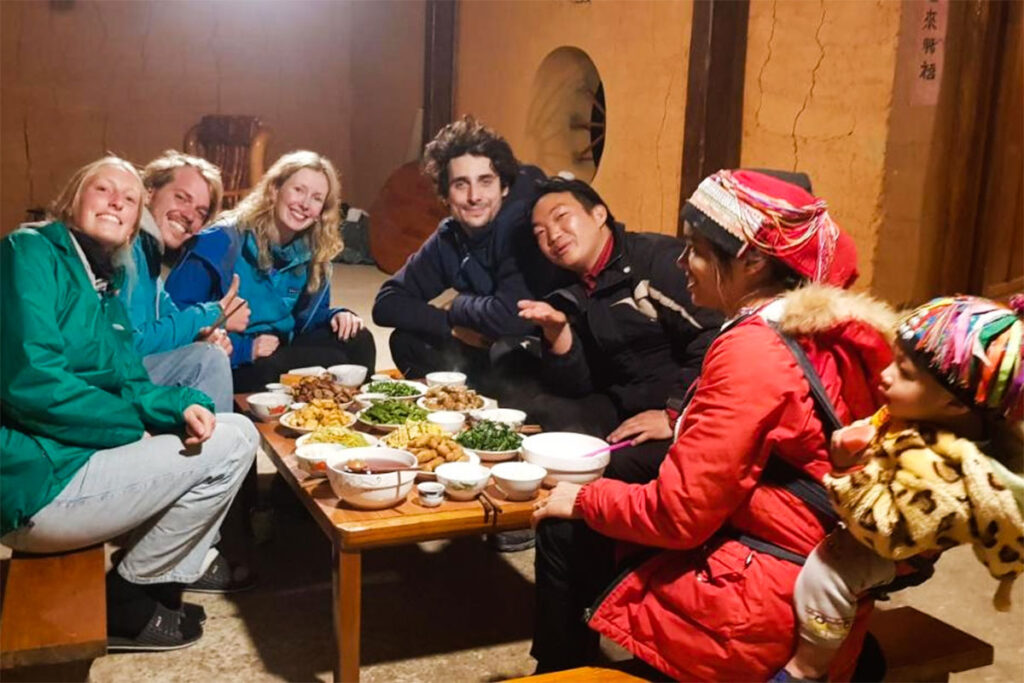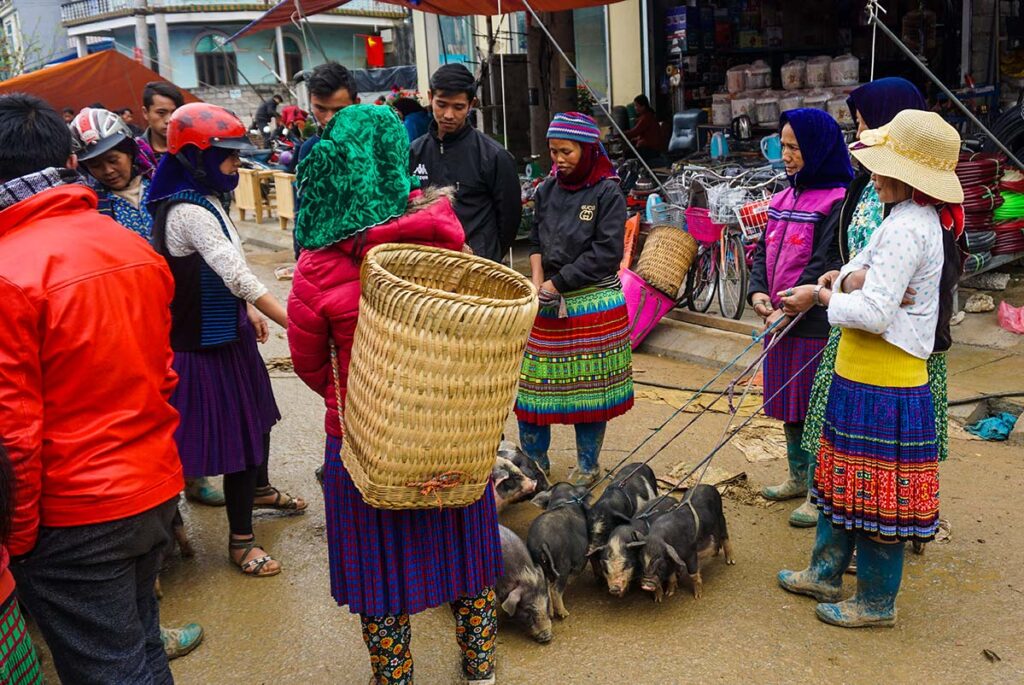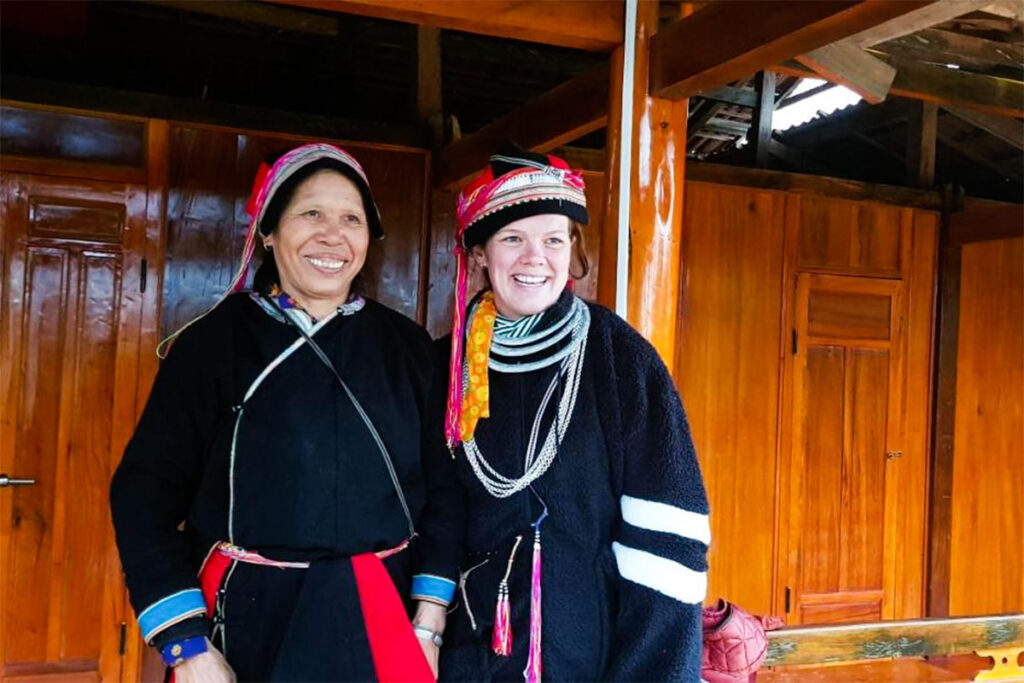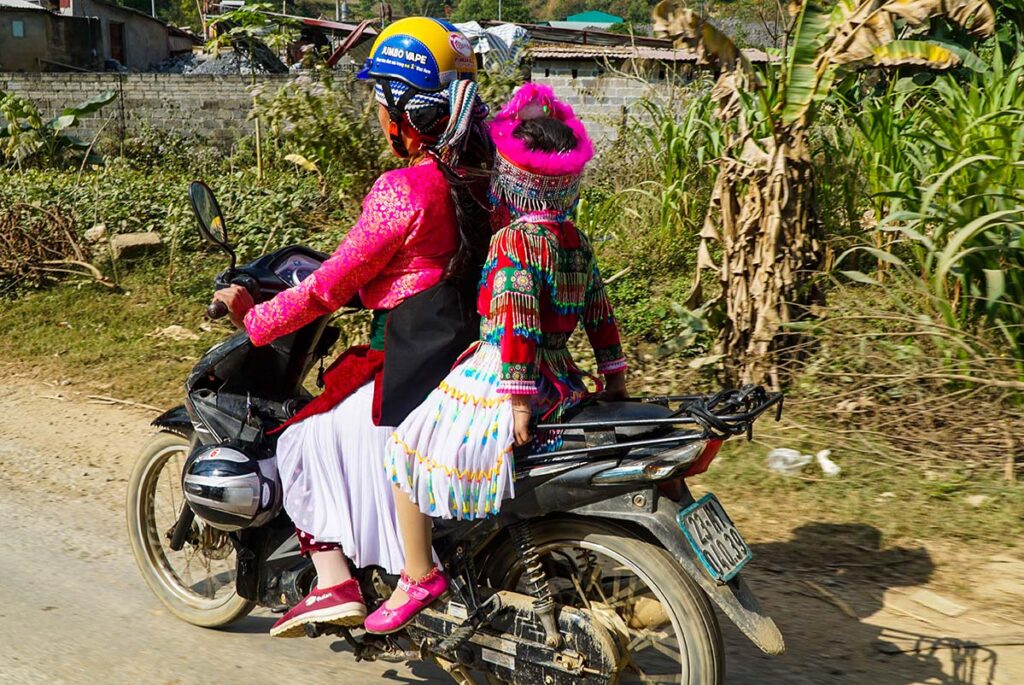What are ethnic minority groups in Vietnam?
Ethnic minority groups in Vietnam represent a rich and diverse cultural tapestry distinct from the majority Kinh Vietnamese. These groups primarily inhabit regions such as northern Vietnam and the central highlands. Each ethnic group boasts its own unique culture, including their own events, traditional clothing, and often even their own language.
Many groups even look noticeably different from the majority Kinh people. These ethnic minorities usually live in tight-knit communities and construct distinct types of houses, such as stilt homes or clay dwellings. They are skilled in various crafts like hunting, fishing, weaving, blacksmithing, and embroidery, among others.
Which ethnic groups can be found in Ha Giang?
Ha Giang is a melting pot of ethnic diversity, with nearly 90% of its population belonging to an ethnic minority, one of the highest densities in Vietnam. The province is home to 17 distinct ethnic groups, the largest being the H’mong, who make up 32% of the total population. Tay (25%), Kinh, Nung, and Dao (each around 10%) also have significant populations. The remaining 15% is divided among smaller ethnic groups like Giay, La Chi, Hoa, Lo Lo, Phu La, and Pu Peo.
Hmong
The Hmong people are known for their intricate embroidery and colorful clothing. Their houses, often constructed from wood and bamboo, are set against the backdrop of the hills, blending seamlessly with the environment.
Tay
The Tay people specialize in fish farming and are known for their stilt houses. Their clothing is simpler than that of the Hmong, usually made of hand-woven cotton dyed indigo.
Dao
The Dao are easily recognizable by their red headscarves. They are known for their medicinal knowledge and often live in wooden houses adorned with intricate carvings.
Nung
The Nung primarily engage in rice farming and live in houses made of clay and baked bricks. They are known for their skills in weaving and blacksmithing.
Lo Lo
The Lo Lo are one of the smaller ethnic groups but have a rich culture, characterized by stone houses and unique polyphonic singing.
Best Ways to Experience Minority Culture in Ha Giang
1. Stay overnight in an ethnic homestay

Staying in a homestay managed by an ethnic family can be an enlightening experience. Enjoy a family dinner, observe the household’s daily routines, and attempt to communicate through language barriers. While these places might not offer the luxuries you’re accustomed to, the experience is authentic and deeply rewarding. Not all homestays are listed online, and sometimes you have to explore a bit to find truly local experiences.
2. Visit local markets

Local markets, such as the Meo Vac Market and Dong Van Market, both held on Sundays, are the perfect venues to observe different ethnic groups in their traditional attire. These markets in Ha Giang, usually held weekly, serve as both trading hubs and social gatherings.
One of the highlights is the livestock section, with water buffalos, cows and pigs, offering a glimpse into the rural lifestyle. The kaleidoscopic array of fabrics, foods, and faces make these markets a must-visit to understand the region’s ethnic diversity.
3. Explore villages

Exploring villages gives you an in-depth look into the daily lives of Ha Giang’s ethnic minorities. Each village offers a unique insight, from the architectural style of their homes to their distinct crafts. Some villages may invite you to participate in communal activities like fishing or farming, giving you hands-on experience of their way of life. Don’t be surprised if you find yourself amidst a local festival or ceremony, which can be an additional cultural treat.
4. Go with a local guide
Having a local guide can enhance your cultural experience tremendously. They not only assist with communication barriers but also offer nuanced insights that you might otherwise miss. For example, they can explain the significance of traditional garments or the history of a particular ritual. Some guides belong to the ethnic minorities themselves and offer unique firsthand perspectives on their culture.
5. Travel by motorbike

Traveling by motorbike offers a unique blend of adventure and cultural immersion. The freedom to pull over at interesting spots allows for spontaneous interactions with locals. Imagine winding through lush mountainscapes, stopping at a remote village, and sharing a cup of tea with locals. Such personal encounters add a rich layer of experience that is not easily achieved through other modes of transportation.
6. Make a trekking
Trekking in Ha Giang offers an intimate way to experience the diverse cultures. Unlike motorbiking, walking allows you to slow down and engage more deeply with your surroundings. This could mean lingering at a local market, helping a farmer with their chores, or sitting down to share a meal at a local household. Guided trekking tours often take you off the beaten path, away from the main Ha Giang Loop, making for a more authentic experience.
7. Join Local Events and Festivals

Ha Giang’s rich tapestry of cultures means that there’s almost always some sort of local event or festival occurring. Each ethnic group has its own set of traditions and celebrations that provide fascinating insights into their unique lifestyles.
For example, the H’mong people have their own version of New Year, while the Dao community is known for their fire dancing events. “Pov Pob” is a Hmong ball tossing game and an important courting ritual traditionally played during the Hmong New Year.
The Khau Vai Love Market, held annually in Ha Giang, is a unique and centuries-old tradition where ethnic minority couples, often from the Nung, Tay, and Giay tribes, come to meet, rekindle past relationships, or seek new ones, all in a spirit of love and mutual understanding.
8. Learn Traditional Crafts & Join Local Workshops
For those interested in hands-on experiences, Ha Giang offers a multitude of opportunities to learn traditional crafts and partake in local workshops. These could range from weaving and embroidery lessons to traditional farming techniques and food preparation. For instance, seasonal agricultural activities offer an eye-opening chance to work alongside locals in their fields during planting or harvesting, providing you with another layer of understanding and appreciation for the local way of life.
Taking part in a local cooking class is not just about sampling the delicious local cuisine but also about diving deeper into the cultural practices and significance behind each dish. Such experiences not only enrich your understanding of the ethnic cultures in Ha Giang but also offer an enjoyable, interactive way to spend your time.
Tips for Exploring the Ethnic Culture in Ha Giang
- Go on the back of a motorbike: It’s safer than driving yourself and often includes a local guide.
- Plan your visit: Many ethnic markets are weekly events, so time your visit accordingly.
- Respect the culture: Always ask before taking photos and be mindful of your attire.
- Learn Basic Phrases: Knowing a few basic phrases in the local language can go a long way in making connections.
- Be Open and Respectful: Embrace the customs and traditions, even if they’re different from your own.
FAQ about Experiencing Ethnic Culture in Ha Giang
What are the best ethnic markets in Ha Giang?
The two biggest ethnic markets in Ha Giang are Meo Vac Market and Dong Van Market, both hosted on Sundays. These markets are colorful, bustling, and provide deep insights into local culture.
Can I take photos of ethnic minority people?
While many people may not mind being photographed, it’s always best to ask for permission first. This is a sign of respect and ensures you are not intruding on their privacy.
What are the three largest ethnic groups in Ha Giang?
The three largest ethnic groups in Ha Giang are the H’mong, Tay, and Dao. They constitute a significant part of the region’s population and have distinctive cultures, crafts, and traditions.
Where do the ethnic minorities in Ha Giang live?
Ethnic minorities in Ha Giang primarily live in rural areas, often in mountainous regions or valleys. Each ethnic group may have a preferred area, and their villages often reflect their unique culture and way of life.
Do I need to book in advance for a homestay in Ha Giang?
While some homestays accept walk-ins, booking in advance is generally advised, especially during peak seasons, to secure your stay.
What should I expect when staying in an ethnic homestay?
Staying in an ethnic homestay will give you a unique cultural experience. Expect basic amenities but authentic local lifestyle, including traditional meals and possibly local music or storytelling.
How comfortable is a homestay in Ha Giang?
Comfort levels vary. Some homestays offer modern amenities like hot showers and Wi-Fi, while others are more basic, offering a true ‘local’ experience.
Can I participate in local crafts and traditions?
Yes, many villages and homestays offer visitors the opportunity to engage in local crafts, such as weaving, fishing, or even traditional cooking. It’s advisable to have a local guide to help you navigate cultural norms.
Are there festivals that showcase ethnic culture?
Yes, various festivals throughout the year celebrate the culture of different ethnic groups. Timing your visit to coincide with these events can offer a richer experience.
What’s the best way to learn about ethnic culture in Ha Giang?
The best way is through immersive experiences like staying in a homestay, visiting ethnic markets, taking part in local crafts, and hiring a local guide who can provide deeper insights into the unique cultures of the region.


